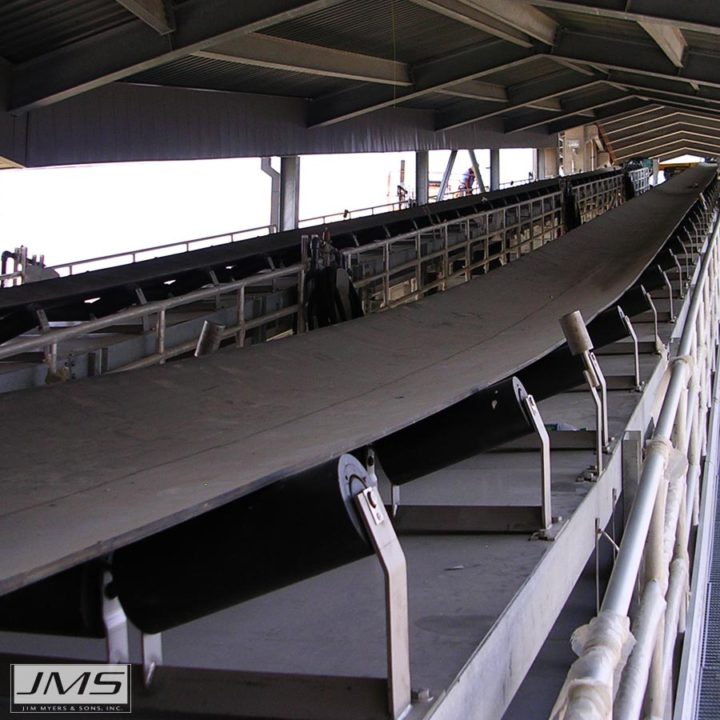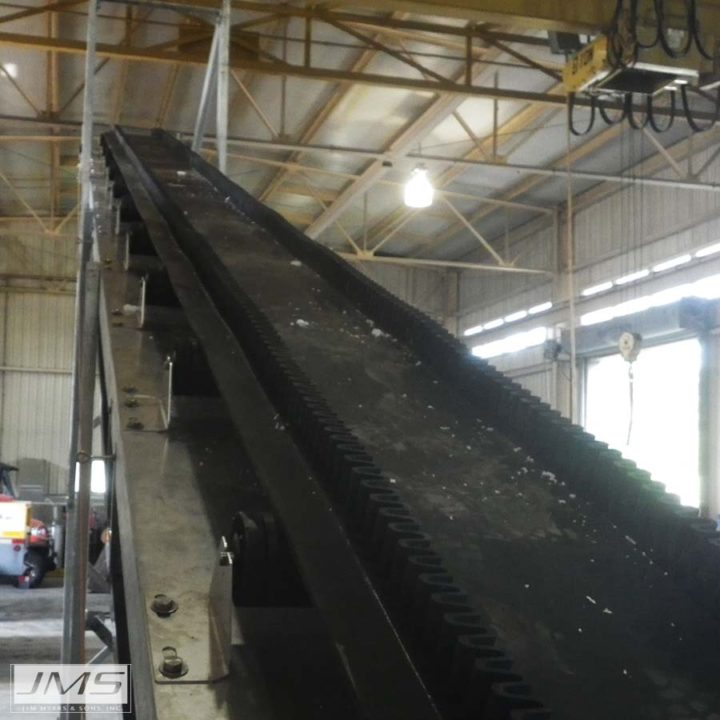Watch this JMS Presentation on Belt Conveyor System basics. Greg Hyde, Product Manager | Material Handling from JMS, talks about the basics of a belt conveyor, what types of belt conveyors are used and why, and the JMS standards for belt conveyors.
Pros of a Belt Conveyor
A belt conveyor receives product on an inlet or impact area. The material remains static on the belt as the belt itself moves and conveys the material to the discharge point, unlike screw conveyors where the material is mixing and turning while the screw conveys the material. This screw conveyor mixing action can lead to some material property changes and issues down the line in the plant. In these cases a belt conveyor would be used due to the product not being disturbed as it is conveys. Also, a belt conveyor can have almost unlimited length and low energy consumption compared to a screw conveyor.
Cons of a Belt Conveyor
Belt conveyors are harder to enclose compared to a screw conveyor. This can be even more difficult if a belt conveyor needs to be covered for odor control. A belt conveyor also require more cleaning than a screw conveyor does.
Types of Belt Conveyors
There are two main types of belt conveyors used; trough a belt conveyor and a sidewall belt conveyor.
A trough belt conveyor is the most common type of conveyor and most cost effective. It uses a flat belt that has idlers that trough the belt. This type of belt conveyor is typically used in longer conveyors due to price savings. A trough belt also can have multiple drop points with the use of belt plows.
A sidewall belt conveyor is a flat belt with corrugated side wall to help keep material in while conveying. This type of conveyor is used mainly in tighter applications or on a belt conveyor that has a steeper elevation and needs multiple planes.


Watch the JMS presentation on belt conveyor basics to learn more about:
- Selection and details on a toughed belt conveyor
- Selection and details on a sidewall belt conveyor
- JMS standards for a belt conveyor
- Competition for conveyors
- And more
Greg Hyde joined the JMS Sales and Marketing Team as Product Manager | Material Handling. Greg has over 30 years of experience in material handling systems, having held high level engineering, sales and business management positions with large full line conveyor manufacturers. He is responsible for overall support and growth of the JMS Bio-HANDLING product line. Outside of work, Greg is a founding member of the “Jammin’ 4 Water” (Water Charities Fundraising Inc.). In regards to his position, Greg says, “ JMS has a rich history in design, quality and material handling. I’m excited to be part of this great team and look forward to guiding the Bio-HANDLING product family for long-term growth.”
